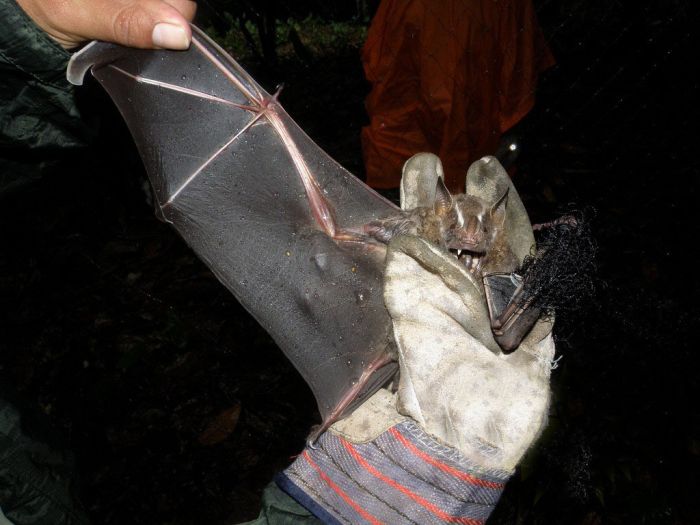|
|
Wild Bats, Peru
|
Megabats primarily eat fruit or nectar. In New Guinea, they are likely to have evolved for some time in the absence of microbats. This has resulted in some smaller megabats of the genus Nyctimene becoming (partly) insectivorous to fill the vacant microbat ecological niche. Furthermore, there is some evidence that the fruit bat genus Pteralopex from the Solomon Islands, and its close relative Mirimiri from Fiji, have evolved to fill some niches that were open because there are no nonvolant or non-flying mammals in those islands.
Fossil bats
There are few fossilized remains of bats, as they are terrestrial and light-boned. An Eocene bat, Onychonycteris finneyi, was found in the fifty-two-million-year-old Green River Formation in South Dakota, United States, in 2004 and was added as a new genus and placed in a new family when published in Nature in 2008. It had characteristics indicating that it could fly, yet the well-preserved skeleton showed that the cochlea of the inner ear lacked development needed to support the greater hearing abilities of modern bats. This provided evidence that flight in bats developed well before echolocation. The team that found the remains of this species, named Onychonycteris finneyi, recognized that it lacked ear and throat features present not only in echolocating bats today, but also in other known prehistoric species. Fossil remains of another Eocene bat, Icaronycteris, were found in 1960.
|
|









